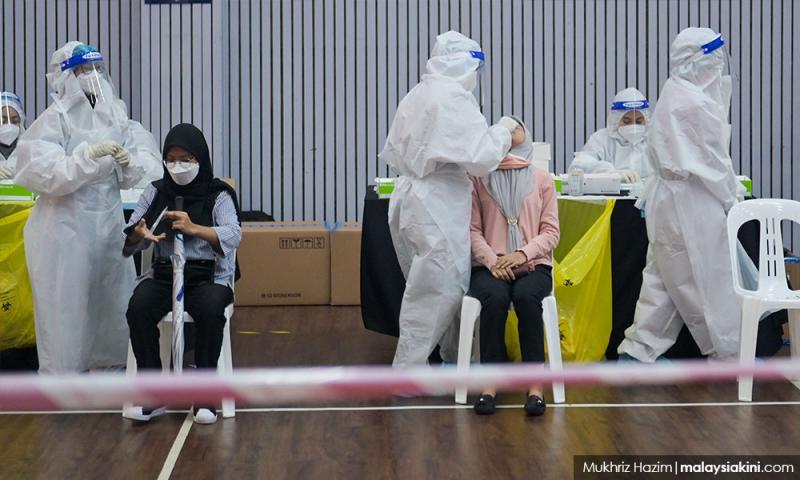LETTER | National Recovery Plans needs 7 supplementary pillars
LETTER | On June 15, a National Recovery Plan to exit Covid-19 was announced by Malaysia Prime Minister Muhyiddin Yassin. Introduction of the plan could not be more timely and is very much called for as the country has been facing the pandemic for exactly 1.5 years since January last year – with several movement restriction orders, provision of fiscal packages and gradual rollout of vaccination programmes by target groups.
With about 10.8 percent of the Malaysian population who have since received at least one dose of vaccine as of June 15, we are well on our way to achieving a 30 percent fully vaccinated nation by the end of the year. Having a roadmap paints planned and clear prioritised directives to facilitate the nation’s desired outcomes. This is especially crucial when managing the masses while fighting against the invisible enemy in an environment where the risk of uncertainty is exponentially high.
Over the past year, some of the notable areas that can be improved when handling national emergencies include inter-agency communications, coordination of information channelling to the masses, coherence and clarity of standard operating procedures (SOPs) and data performance intelligence.
The Institute of Strategic Analysis and Policy Research (Insap) felt that while the exit plan announced is well-calculated - considering our current progress and resource availability, having a supplementary support system can ensure a smoother exit. Hence, collating lessons learnt from other successful nations while taking into account the areas that we can improve in containing Covid-19, seven additional pillars to support the exit phases of the National Recovery Plan are recommended.
1. Communication strategies - Crisis and Emergency Risk Communication model: Applying known efficient principles of risk and health communication strategies, where we focus on providing people with timely and accurate information about the disease, transmission risk, raising awareness about the disease, motivating health and behaviour change, informing people about government decisions and procedures. Also, measures in dealing with the spread of misleading information and rumours should be addressed.
2. Healthcare system and capacity: As healthcare capacity is highly dependent on the number of daily cases, reliable dissemination of information is vital. We would like to see more practical ways to leverage health communication strategies. Comparative health system research should be employed to facilitate informed decision making. Also, fully utilise existing ‘Klinik Kesihatan’ and mobile clinics to achieve 200,000 daily vaccination rate. Post-traumatic stress disorder among Covid-19 survivors should be a focused area too.
3. Research and innovation - Data management and performance intelligence: Avoid non data-driven and uncoordinated approaches in addressing the outbreak. Good data management, analytics advancement and the use of performance intelligence are critical when dealing with uncertainty as it enables rapid shifts in priorities from time to time. To encourage local experts to embrace research and innovation spirit by providing universities with more funding for prioritised areas.
4. Addressing social-related issues arising from the pandemic - Social recovery plan: Social issues arising from Covid-19 should be addressed by encouraging more studies on deciphering how to discourage future spikes. The social recovery plan must be tailored to targeted communities, able to explain potential triggers, proposed evidence-based solutions via careful observations of voluntary behaviour changes.
5. Job opportunities and job market - Active manpower policy: A comprehensive yet flexible active manpower policy will need to be introduced in an effort to efficiently match job seekers, especially fresh graduates, to available jobs with competitive salaries. We suggest introducing radical policies to boost work-based training by larger companies as part of their corporate social responsibility. Higher learning institutions to spark conversations on future work trends post Covid-19, where the outcome of these discussions could potentially alter future courses offered.
6. Education - Turning challenges into areas of improvement: To monitor acceptance and adaptation levels of students, educators and the education support system during and post Covid-19. The archaic education system can be gradually revamped, while riding on the advancement of digitalisation. Syllabus, ways of engaging student, teaching methods, marking style should experience changes and improvements. This should be seen as an opportunity for learning institutions to seek new systems and approaches to education. The aim is to turn long term challenges into long term support.
7. Rethinking urban planning and spatial design: Covid-19 is a contemporary health challenge that requires interdisciplinary solutions of medicinal and spatial design knowledge. Urban planning plays an important role in determining the health of urban populations.
It is highly recommended to include urban planners when expanding the field of medicine and public health – it ought to become a hybrid with spatial medicine. This is where the design of built environments can focus on creating positive spatial settings that are able to control environmental risks.
The Malaysian government has been overly focused on economic measures in containing the Covid-19. In the roadmap to the Covid-19 recovery or exit plan, the focus should be on people’s wellbeing, welfare and livelihood.
The above is issued by the Institute of Strategic Analysis and Policy Research (Insap).
The views expressed here are those of the author/contributor and do not necessarily represent the views of Malaysiakini.
RM12.50 / month
- Unlimited access to award-winning journalism
- Comment and share your opinions on all our articles
- Gift interesting stories to your friends
- Tax deductable
